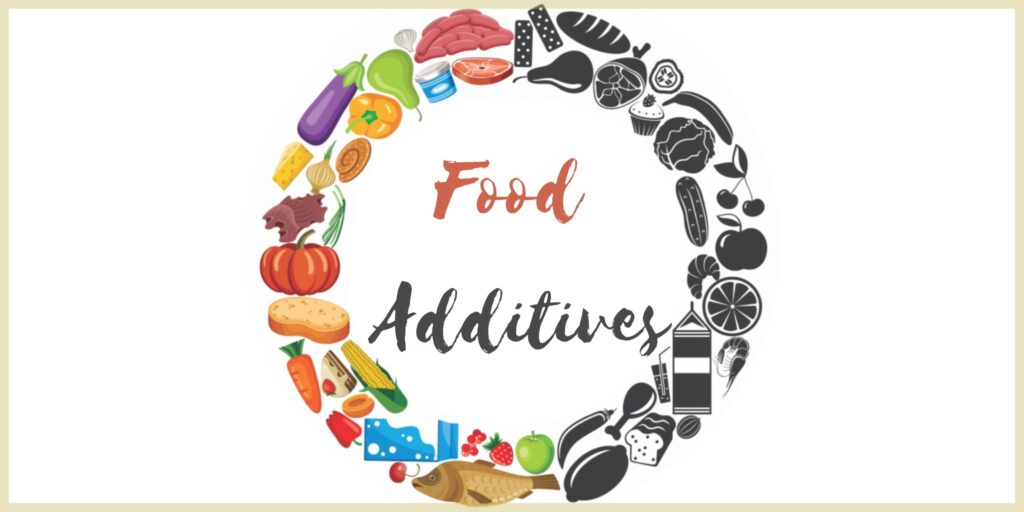Roles of food additives
The roles of food additives are pointed out to the fullest extent in this article. The term “food hydrocolloid” is typically used to refer to ingredients that act as stabilisers, thickeners, and gelling agents. The vast majority of them have no flavour and no smell. Hydrocolloids found in food may thicken, gel, emulsify, stabilise, and possess other features such as the ability to govern crystal formation. Stabilisers and emulsifiers can operate together synergistically to maintain a homogeneous dispersion of food components that, on their own, would not mix very well. This binds the meal’s big molecules, which results in the food being more stable and having a higher viscosity. Agar, carrageenan, and pectin are examples of common stabilisers. These ingredients may be found in a variety of foods, including mayonnaise, sauces, and syrups. In the same way, as stabilisers and thickeners do their jobs, gelling agents also do theirs. Pectin, alginate, and carrageenan are some examples of the substances that fall under this category. The proportion of the gelling agent, as well as the pH and temperature of the medium, all have an impact on the gelling procedure.
Thickeners
Food preparations can increase their viscosity by using thickening agents without altering other qualities, such as flavour. Polysaccharides such as starches and gums, as well as proteins such as gelatin, are examples of these agents. Some thickening agents could also affect the proteins that are already present in the diet. They are typically utilised in dishes such as puddings, sauces, gravies, and soups. People in the clinical population who have dysphagia, often known as trouble swallowing, may benefit from the usage of thickeners since it lowers their risk of aspiration. Constipation, flatulence, or loose stools are some of the potential adverse effects that the usage of thickening agents may bring on. Assisting in the preparation or processing of food is one of the roles of food additives. Food additives are given a legal definition by regulatory authorities so that they can impose a premarket approval requirement on food manufacturers. The legal obligation to determine whether or not food additives are safe falls mostly on the shoulders of regulatory bodies. They specify the kinds of foods in which they can be used, the amounts that can be used, and how they should be labelled on food packages.
Safety
Food additives are subjected to higher levels of scrutiny, regulation, and oversight than they ever have been before in history. One of the roles of food additives is to ensure that the product is kept in its natural state. In order to reduce the likelihood of any potential harm to human health, each and every new food additive is put through an exhaustive testing and safety evaluation. On the other hand, large dosages have the potential to have adverse effects and interactions between nutrients and drugs. If you consume more than 15 grammes of xanthan gum, for instance, you may get feelings of nausea, gas, and bloating. Carrageenan can induce unpleasant side effects in persons who are using anticoagulants and antihypertensive treatments, and pectin can react with antibiotics and cholesterol-lowering therapies. Heart disease and mortality have been linked to hardened arteries or stiffness in the arteries caused by food additives and other cooking chemicals. However, food-drug combinations are feasible with some medicines. As a consequence of this, food additives are subjected to stringent testing and safety evaluation in order to limit the risk of any potential detrimental effects on human health.
Bottom line
By educating customers on the role that food additives play in their own kitchens, registered dietitian nutritionists can make consumers feel more at ease with food additives. The roles of food additives entail making the food more appealing. Many food formulations extensively use stabilisers, thickeners, and gelling agents, sometimes called food hydrocolloids, to provide the required mouthfeel and texture. Lung cancers might develop faster or create new tumours if a commonly consumed food additive is present, according to a recent study. They are obtained mostly from a natural source, and their primary function is that of an ingredient in food items, where they are utilised to impart viscosity, stability, suspension, and gelation. The most typical applications for food hydrocolloids are baking and confectionery, dairy and frozen desserts, drinks, meat products, and oils and fats. The market for certain food hydrocolloids is sensitive to shifts in the demand exhibited by the applications for which they are ultimately intended. Consequently, it is anticipated that the rapidly expanding bakery and confectionery sector would contribute positively to expanding the worldwide food hydrocolloid market.



